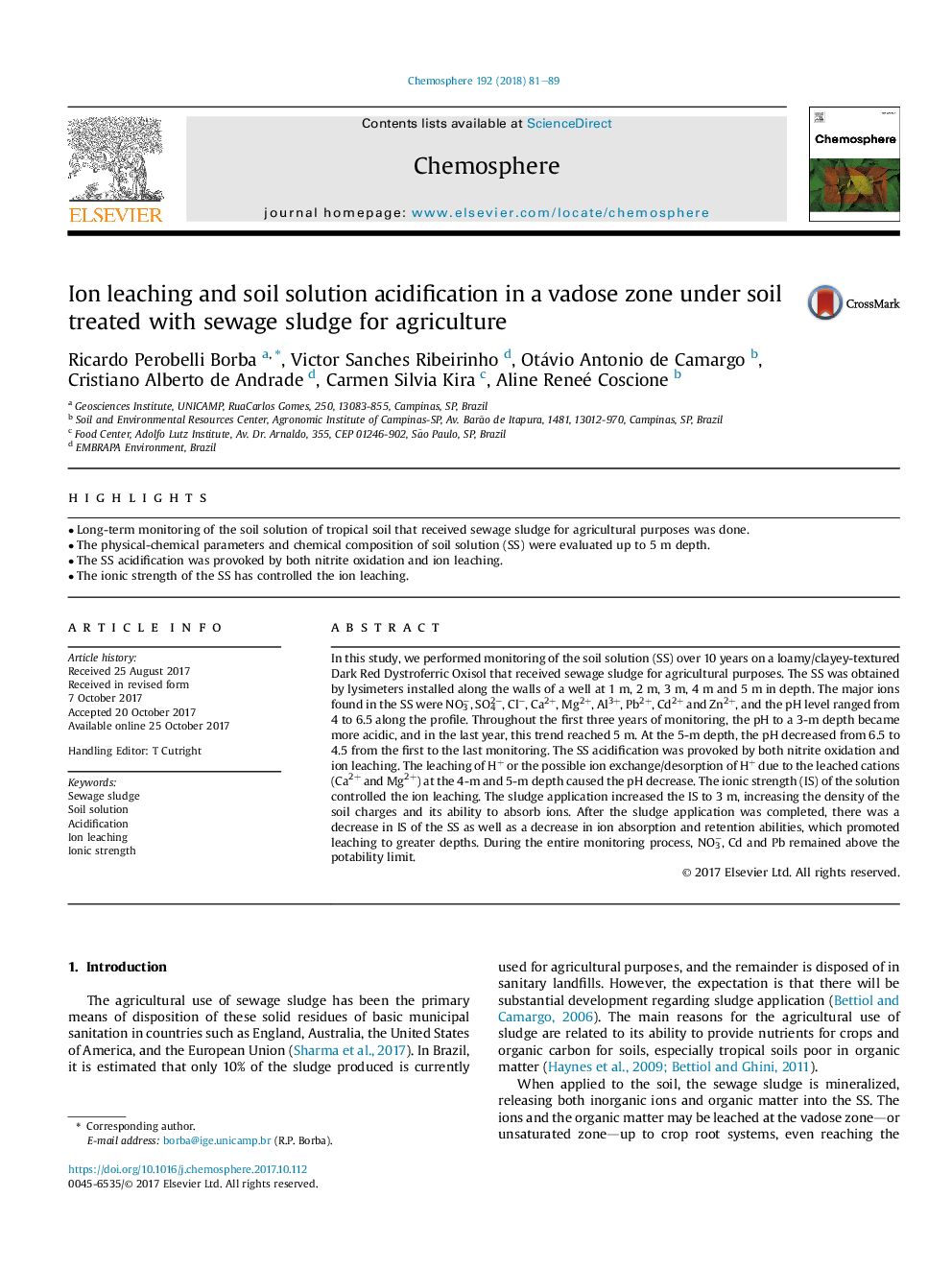| کد مقاله | کد نشریه | سال انتشار | مقاله انگلیسی | نسخه تمام متن |
|---|---|---|---|---|
| 8852739 | 1618779 | 2018 | 9 صفحه PDF | دانلود رایگان |
عنوان انگلیسی مقاله ISI
Ion leaching and soil solution acidification in a vadose zone under soil treated with sewage sludge for agriculture
ترجمه فارسی عنوان
شستشوی یون و محلول اسیدی شدن خاک در ناحیه رهوز در خاک تحت درمان با لجن فاضلاب برای کشاورزی
دانلود مقاله + سفارش ترجمه
دانلود مقاله ISI انگلیسی
رایگان برای ایرانیان
کلمات کلیدی
لجن فاضلاب، راه حل خاک، اسیدی شدن، یون شستشو، قدرت یونیک،
موضوعات مرتبط
علوم زیستی و بیوفناوری
علوم محیط زیست
شیمی زیست محیطی
چکیده انگلیسی
In this study, we performed monitoring of the soil solution (SS) over 10 years on a loamy/clayey-textured Dark Red Dystroferric Oxisol that received sewage sludge for agricultural purposes. The SS was obtained by lysimeters installed along the walls of a well at 1Â m, 2Â m, 3Â m, 4Â m and 5Â m in depth. The major ions found in the SS were NO3â, SO42â, Clâ, Ca2+, Mg2+, Al3+, Pb2+, Cd2+ and Zn2+, and the pH level ranged from 4 to 6.5 along the profile. Throughout the first three years of monitoring, the pH to a 3-m depth became more acidic, and in the last year, this trend reached 5Â m. At the 5-m depth, the pH decreased from 6.5 to 4.5 from the first to the last monitoring. The SS acidification was provoked by both nitrite oxidation and ion leaching. The leaching of H+ or the possible ion exchange/desorption of H+ due to the leached cations (Ca2+ and Mg2+) at the 4-m and 5-m depth caused the pH decrease. The ionic strength (IS) of the solution controlled the ion leaching. The sludge application increased the IS to 3Â m, increasing the density of the soil charges and its ability to absorb ions. After the sludge application was completed, there was a decrease in IS of the SS as well as a decrease in ion absorption and retention abilities, which promoted leaching to greater depths. During the entire monitoring process, NO3â, Cd and Pb remained above the potability limit.
ناشر
Database: Elsevier - ScienceDirect (ساینس دایرکت)
Journal: Chemosphere - Volume 192, February 2018, Pages 81-89
Journal: Chemosphere - Volume 192, February 2018, Pages 81-89
نویسندگان
Ricardo Perobelli Borba, Victor Sanches Ribeirinho, Otávio Antonio de Camargo, Cristiano Alberto de Andrade, Carmen Silvia Kira, Aline Reneé Coscione,
